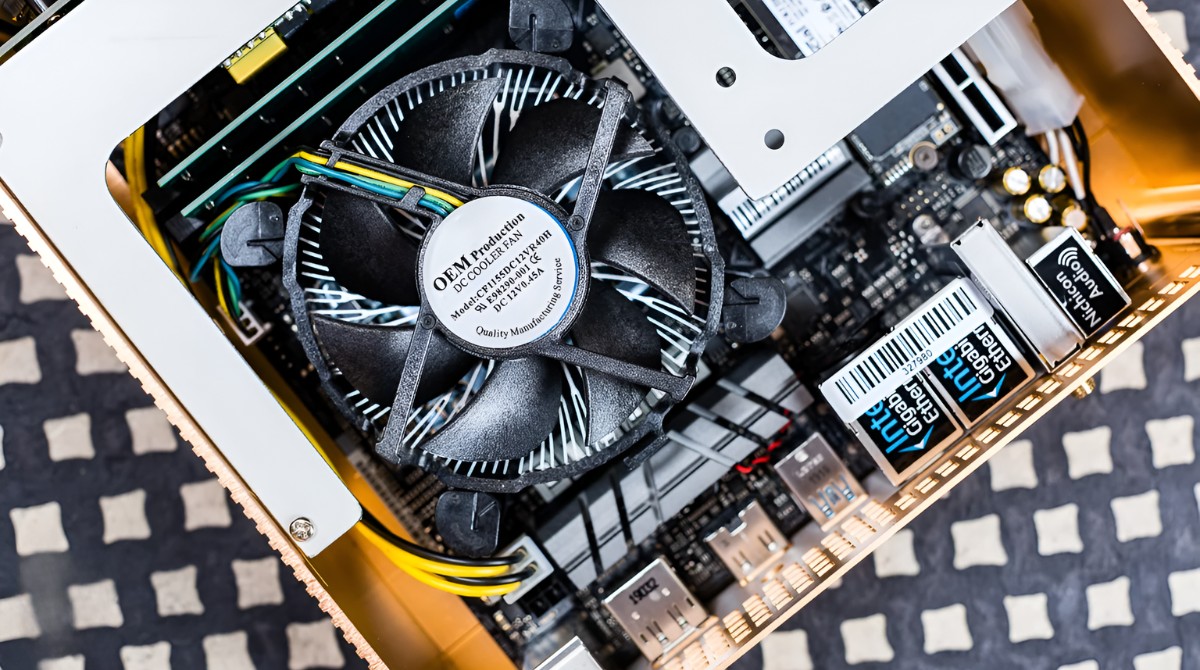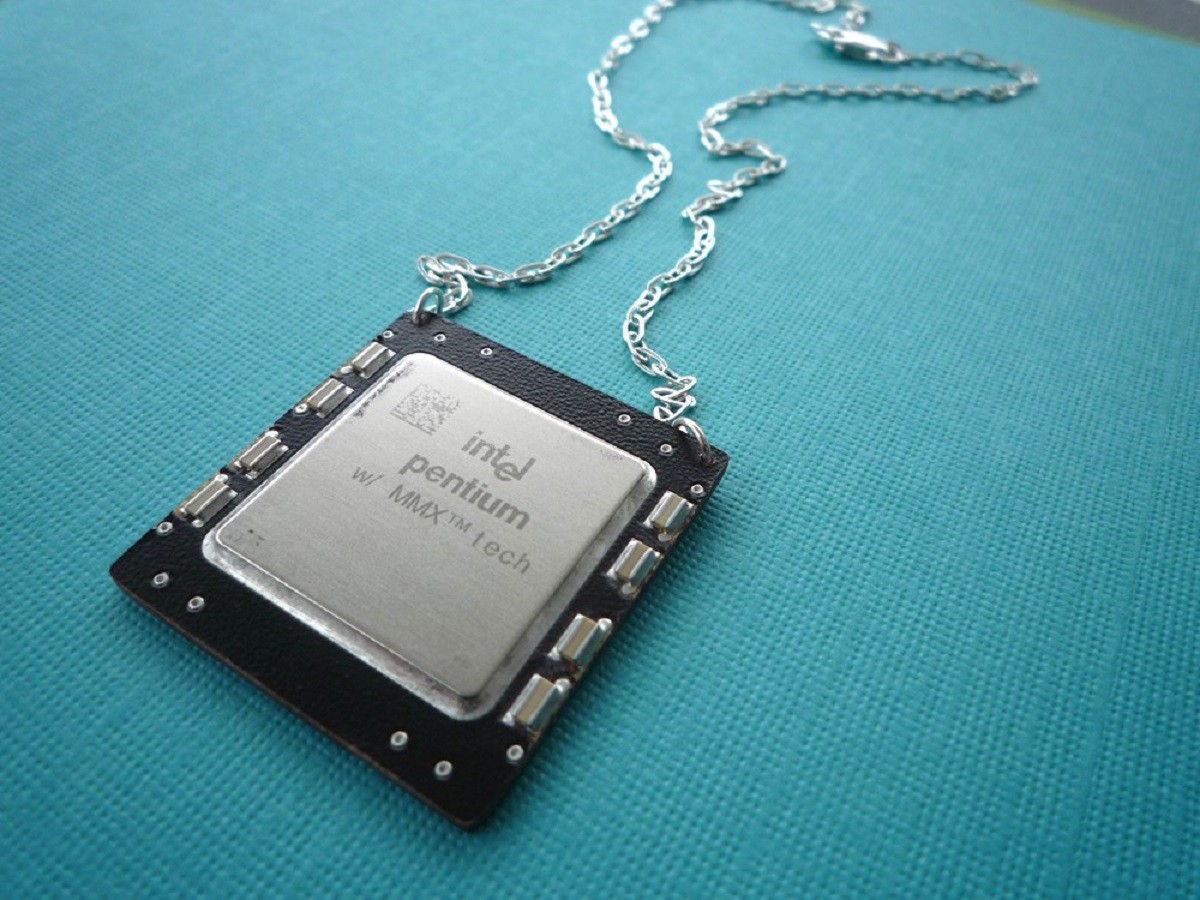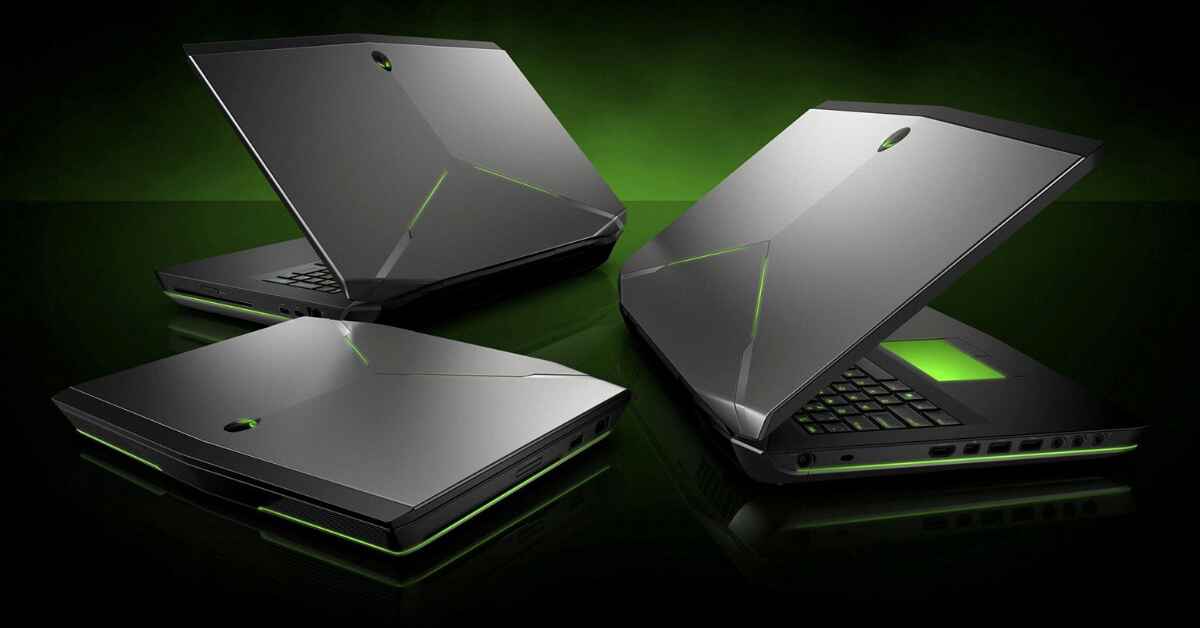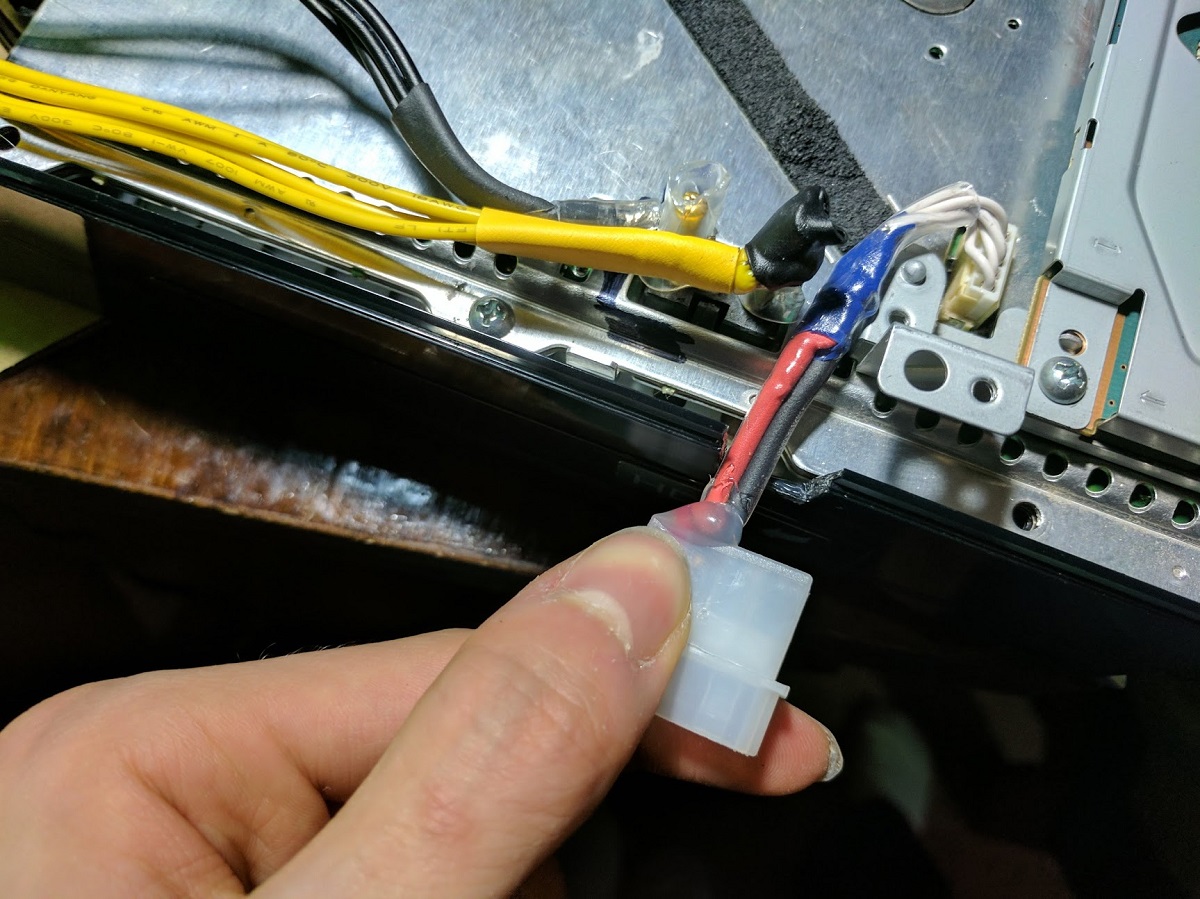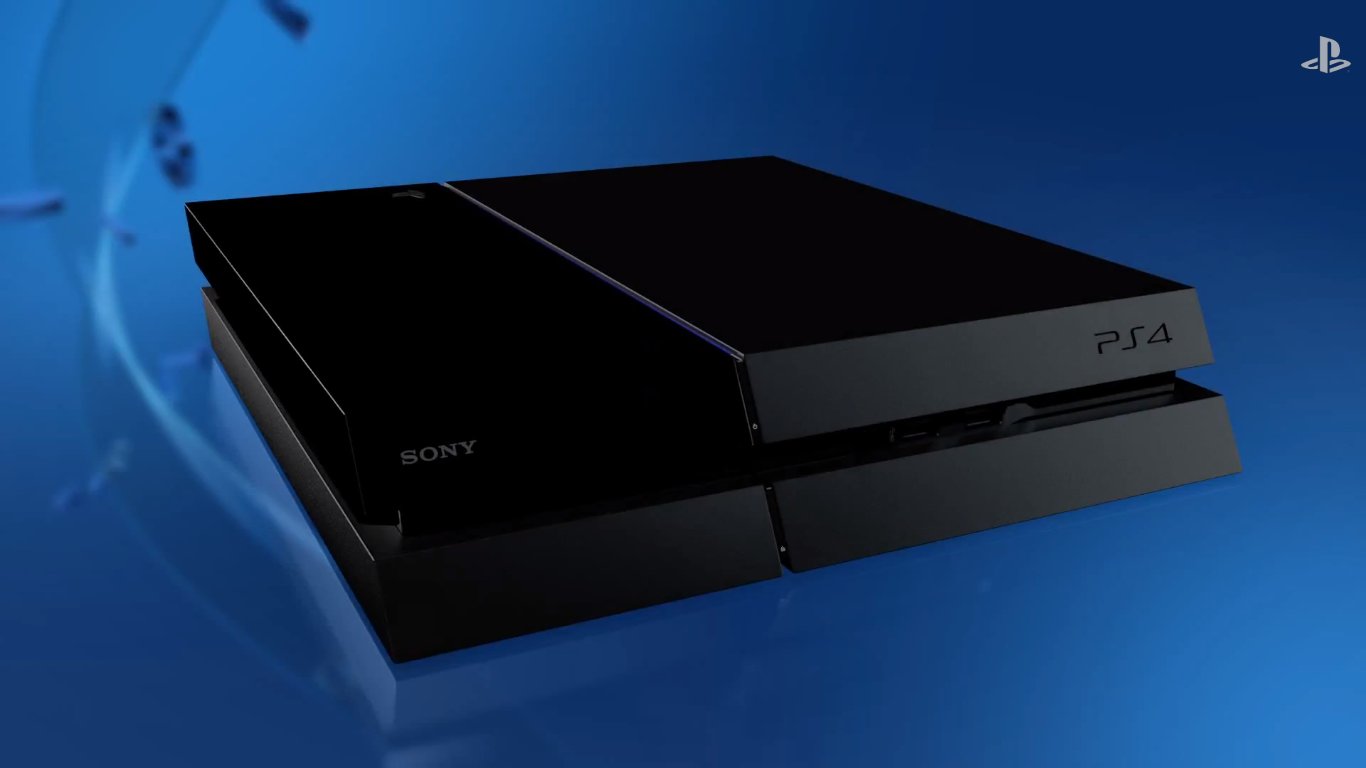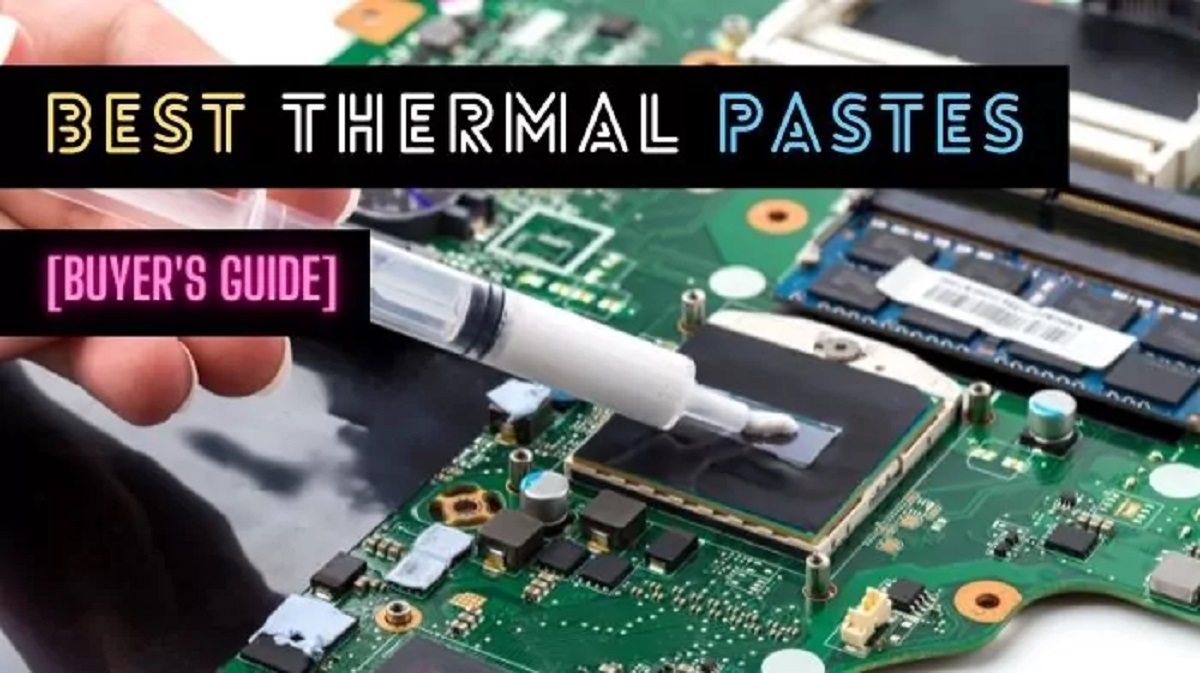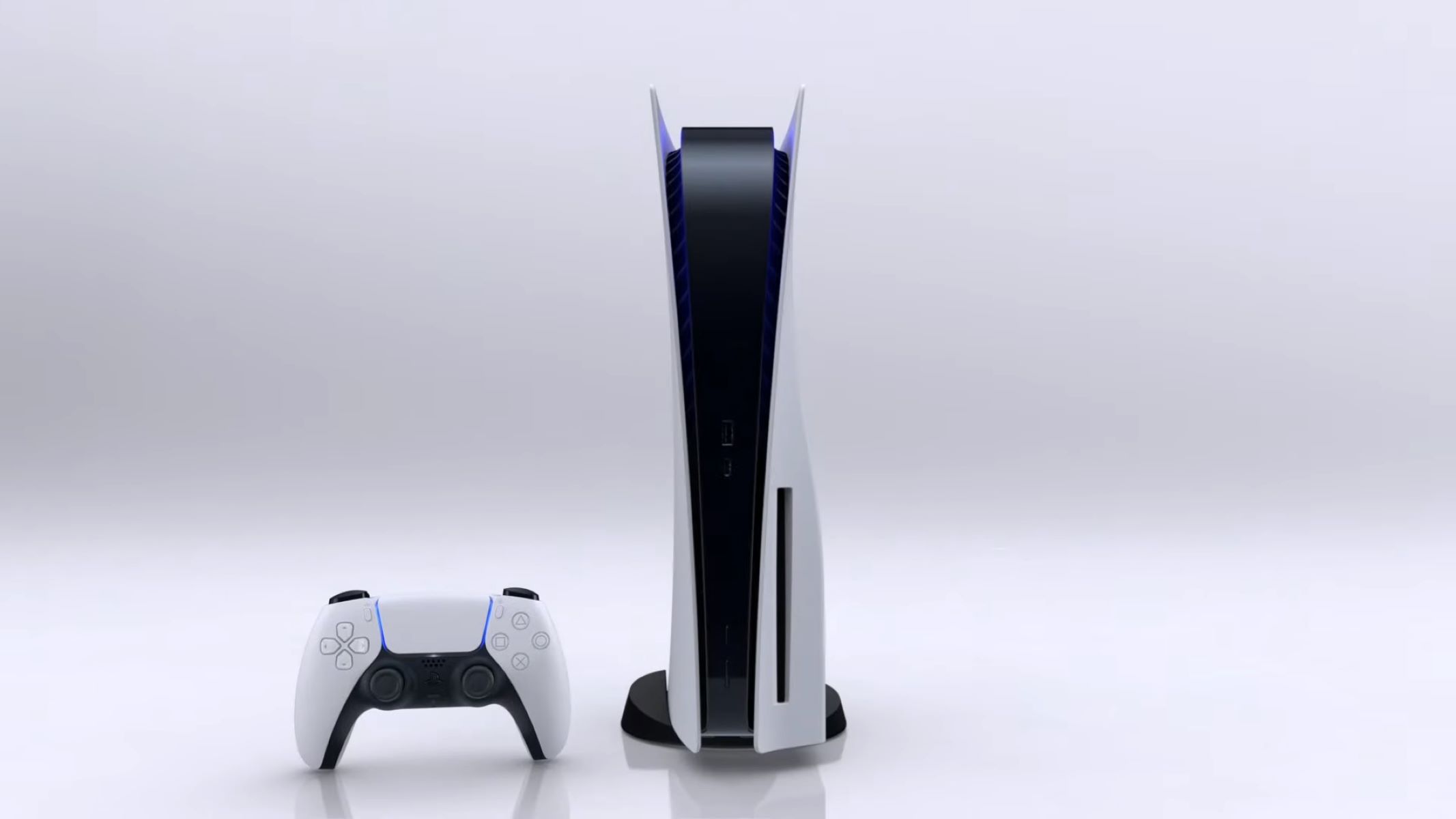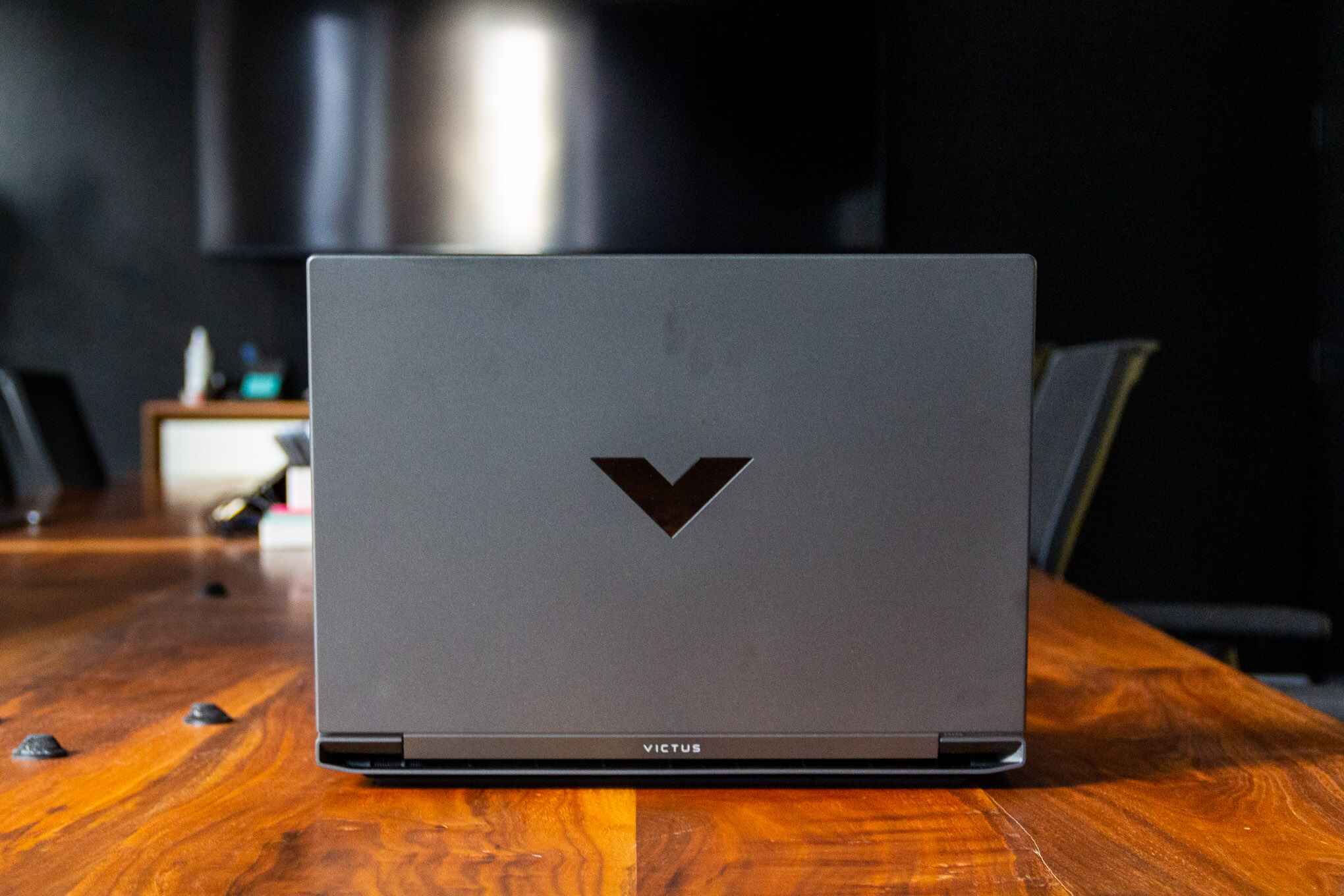Introduction
Are you looking to sell your CPU and make some extra cash? Whether you’re upgrading your computer or simply need to get rid of your old processor, selling your CPU can be a lucrative option. However, navigating the market and finding the right buyers can be a challenge. That’s where this guide comes in.
In this article, we will walk you through the process of selling your CPU, from researching its market value to interacting with potential buyers and closing the deal. We’ll provide you with valuable tips and strategies to ensure a smooth and successful selling experience.
Selling your CPU can not only help you declutter your space but also recoup a portion of your investment. By following the steps outlined in this guide, you can maximize your chances of selling your CPU at a fair price and to the right buyer.
Remember, every step in the process is crucial, from researching the market value of your CPU to shipping and packaging it safely. So, take your time, follow our guide, and get ready to sell your CPU with confidence!
Researching the Market Value of Your CPU
Before you can sell your CPU, it’s essential to determine its market value. This will help you set a competitive price and attract potential buyers. Here are a few steps to help you research the market value of your CPU:
- Check Online Marketplaces: Start by browsing popular online marketplaces such as eBay, Craigslist, and Amazon. Look for listings of CPUs similar to yours, paying attention to the condition, specifications, and asking prices. This will give you a ballpark figure of what buyers are willing to pay for your CPU.
- Consider Age and Performance: Take into account the age and performance of your CPU. Newer models with higher specifications and better performance will generally command a higher price than older or lower-end models. Research reviews and benchmarks to understand the market value of CPUs with similar specifications to yours.
- Check Tech Forums and Communities: Visit tech forums and online communities dedicated to computer hardware to gather insights from enthusiasts and experts. Engage in discussions or create a post asking for opinions on the market value of your specific CPU model. These communities can provide valuable insights and help you gauge the demand and pricing trends.
- Consult Online Price Guides: There are several websites that track the prices of computer components, including CPUs. They provide historical data and trends to help you determine the current market value of your CPU. Utilize these resources to get an accurate estimate.
- Consider Supply and Demand: Keep in mind that market prices can fluctuate based on supply and demand. If there is a high demand for CPUs like yours, you may be able to set a slightly higher price. Conversely, if the market is saturated with similar CPUs, you may need to adjust your price accordingly to stay competitive.
By conducting thorough research and considering these factors, you can determine a realistic and competitive market value for your CPU. This will increase your chances of attracting potential buyers and ultimately sell your CPU at a fair price.
Cleaning and Preparing Your CPU for Sale
Before selling your CPU, it’s important to ensure that it is clean, well-maintained, and ready for the hands of a new owner. Taking the time to clean and prepare your CPU will not only enhance its visual appeal but also increase its perceived value. Here’s how you can clean and prepare your CPU for sale:
- Gather Cleaning Supplies: Start by gathering the necessary cleaning supplies, including a can of compressed air, lint-free microfiber cloths, isopropyl alcohol, and a small brush or cotton swabs.
- Turn off and Disconnect: Make sure your computer is completely turned off and disconnected from any power source. This is to ensure your safety and avoid any damage to the CPU during the cleaning process.
- Remove Dust and Debris: Use the compressed air to blow away any dust or debris from the CPU and its components. Pay close attention to the CPU fan, heat sinks, and any other areas where dust tends to accumulate. Be gentle to avoid causing any damage.
- Clean the Exterior: Dampen a microfiber cloth with isopropyl alcohol and gently wipe down the exterior of the CPU. This will remove any fingerprints, smudges, or stains. Avoid using excessive moisture and ensure that the cloth is not dripping wet.
- Inspect for Damage: Carefully inspect the CPU and its components for any signs of damage or wear. Check the CPU pins, thermal paste, and any other critical areas. If you notice any issues, it’s best to address them before selling the CPU.
- Package with Care: Once your CPU is clean and in good condition, it’s crucial to package it properly for shipping or storage. Place it in an anti-static bag and secure it with bubble wrap or foam padding to protect it from any potential damage during transit.
By thoroughly cleaning and preparing your CPU, you present it in the best possible condition to potential buyers. This not only reflects positively on your credibility as a seller but also increases the chances of selling your CPU at a desirable price. Remember, a well-maintained and clean CPU is more likely to attract buyers who are willing to pay a premium for quality.
Taking High-Quality Photos of Your CPU
When it comes to selling your CPU online, high-quality photos can make a significant impact on your listing’s appeal. Clear and well-captured images can attract potential buyers, showcase the condition of your CPU, and convey a sense of professionalism. Follow these tips to take high-quality photos of your CPU:
- Choose the Right Location: Find a well-lit area with good natural light to capture your CPU. Avoid harsh shadows or artificial lighting that can distort the colors and details.
- Clean and Stage Your CPU: Before taking photos, make sure your CPU is clean and free from any dust or smudges. Remove any unnecessary cables or clutter around the CPU to create a clean and organized look.
- Use a Stable Surface: Place your CPU on a stable surface, such as a clean desk or table. This will minimize any shaking or blurriness in your photos.
- Multiple Angles: Capture your CPU from multiple angles to provide a comprehensive view. Include shots of the front, back, sides, and top to showcase its design and features.
- Focus on Details: Zoom in on the important details of your CPU. Highlight any unique features, branding, or logos that can differentiate your listing from others.
- Include Accessories: If you’re including accessories like the CPU cooler or original packaging, make sure to include them in some of your photos. This adds value to the listing and can attract more potential buyers.
- Use a High-Resolution Camera: Use a camera with good resolution or a smartphone with a high-quality camera to capture clear and sharp images. Avoid using blurry or pixelated photos as it can negatively impact the perceived value of your CPU.
- Editing and Cropping: Once you have taken the photos, consider editing them to enhance the colors and clarity. Crop the images to remove any unnecessary background elements and focus on the CPU.
Remember, your photos are the first impression potential buyers have of your CPU. By investing time in taking high-quality photos, you are more likely to attract serious buyers and stand out from the competition. So, take your time, experiment with different angles and lighting, and showcase your CPU in the best way possible.
Writing a Detailed and Accurate Product Description
The product description is your opportunity to provide potential buyers with all the necessary information about your CPU. A well-written and detailed description can give buyers confidence in your listing and help them make an informed decision. Here are some tips for writing a compelling product description:
- Title: Start with a concise and attention-grabbing title that includes the important details of your CPU, such as the brand, model, and any notable specifications.
- Specifications: Provide a comprehensive list of the CPU’s specifications, including the model number, core count, clock speed, cache size, and compatibility details. Be accurate and double-check your information to avoid any potential misunderstandings.
- Condition: Clearly state the condition of your CPU, whether it is new, used, or refurbished. Be honest and describe any signs of wear or damage, if applicable.
- Performance and Usage: Highlight the performance capabilities of your CPU and describe its intended usage. You can mention if it is suitable for gaming, graphic design, video editing, or other specific tasks.
- Accessories and Extras: Include a section that mentions any additional accessories, such as the CPU cooler, original packaging, or warranty. This can add value to your listing and make it more attractive to potential buyers.
- History and Maintenance: Briefly mention the history of the CPU, such as its purchase date or any past upgrades or repairs. If you have taken good care of the CPU, highlight this by mentioning regular maintenance, cleaning, or any notable upgrades.
- Unique Selling Points: Identify and emphasize any unique features or selling points of your CPU. This could be a specialized cooling system, overclocking capabilities, or hardware optimizations.
- Price and Shipping: Clearly state the price you are asking for your CPU and any applicable shipping details or costs. Be upfront about whether you offer local pickup or international shipping options.
- Clear and Engaging Language: Write your description in clear and concise language, avoiding technical jargon as much as possible. Use descriptive and engaging words to capture the attention of potential buyers and create a positive impression.
By providing a detailed and accurate product description, you can build trust with potential buyers and increase the chances of a successful sale. Take the time to craft a compelling description that highlights the unique qualities of your CPU and addresses any potential concerns or questions that buyers may have.
Choosing the Right Selling Platform for Your CPU
When it comes to selling your CPU, choosing the right selling platform is crucial. The platform you choose will determine your reach, the visibility of your listing, and the overall selling experience. Here are some factors to consider when selecting the right selling platform for your CPU:
- Online Marketplaces: Consider using popular online marketplaces such as eBay, Amazon, or Newegg. These platforms have a large user base and established trust, increasing the chances of finding potential buyers. However, keep in mind that there may be fees and competition from other sellers.
- Specialized Tech Forums: Explore specialized tech forums or online communities dedicated to buying and selling computer components. These platforms cater specifically to tech enthusiasts who may be actively looking for CPUs. They often have lower fees or minimal transaction costs.
- Social Media Platforms: Utilize social media platforms like Facebook Marketplace or local buy/sell groups to reach a local audience. This can be an effective option if you prefer face-to-face transactions or want to avoid shipping costs.
- Classified Ads Websites: Consider using classified ads websites, such as Craigslist or Gumtree, to sell your CPU locally or within a specific region. These platforms offer a more traditional approach to selling, where buyers can directly contact you.
- Online Auctions: Participating in online auctions, like eBay auctions, can create excitement and competition among potential buyers. This can potentially drive up the price of your CPU if there is high demand.
- Local Computer Stores: Check if any local computer stores or repair shops buy used CPUs. While they may offer lower prices compared to online platforms, selling locally can be convenient and provide a faster transaction.
- Research the Platform: Before choosing a selling platform, research its policies, fees, and user reviews. Consider the platform’s reputation, user base, and level of seller protection to ensure a positive selling experience.
- Multiple Platforms: You can also consider listing your CPU on multiple platforms simultaneously to increase your chances of finding a buyer. Just ensure that you can manage the listings effectively and promptly respond to potential buyers.
Every selling platform has its pros and cons, so it’s important to weigh these factors and choose the platform that aligns with your preferences, target audience, and desired selling experience. Take into account the reach, fees, buyer demographics, and convenience factors when making your decision.
Pricing Your CPU Competitively
Setting the right price for your CPU is essential to attract potential buyers and ensure a successful sale. Pricing it competitively requires careful consideration of various factors. Here are some tips to help you price your CPU appropriately:
- Research the Market: Conduct thorough research to determine the current market value of CPUs similar to yours. Check online marketplaces, tech forums, and price guides to get an idea of the price range. Take into account factors such as brand, model, performance, and condition.
- Consider Age and Condition: Take into account the age and condition of your CPU when pricing it. Newer models with better performance generally command higher prices. On the other hand, if your CPU is older or has signs of wear, you may need to adjust the price accordingly.
- Factor in Accessories: If your CPU comes with additional accessories such as the CPU cooler or original packaging, factor in their value when setting the price. Including these extras can justify a slightly higher price compared to a bare CPU.
- Competitor Analysis: Check the prices of similar CPUs listed by other sellers on the chosen selling platform. Aim to set your price lower than comparable listings while still maintaining a fair value for your CPU. However, be cautious not to undervalue your CPU significantly.
- Consider Demand and Supply: Take into account the demand and supply of CPUs in the market. If there is high demand for CPUs like yours, you may be able to set a slightly higher price. Conversely, if there is an oversupply, you may need to adjust your price to attract potential buyers.
- Flexibility: Be open to negotiation and consider leaving some room for potential buyers to engage in price discussions. This can help attract serious buyers and make your listing more appealing.
- Include Shipping Costs: If applicable, factor in shipping costs when pricing your CPU. Offering free or discounted shipping can make your listing more attractive to buyers and potentially justify a slightly higher price.
- Promotions and Bundles: Consider offering promotional deals or creating bundles with other related computer components to increase the perceived value of your listing. This can help justify a higher price and attract buyers looking for a comprehensive package.
By considering these factors and pricing your CPU competitively, you can increase the likelihood of attracting potential buyers and selling your CPU at a fair price. It’s essential to find the right balance between setting a competitive price and ensuring that your CPU’s value is appropriately reflected in the listing.
Shipping and Packaging Your CPU Safely
Once you’ve sold your CPU, it’s crucial to package and ship it safely to ensure it arrives in the hands of the buyer in the same condition as advertised. Proper packaging reduces the risk of damage during transit and maintains customer satisfaction. Here are some tips for shipping and packaging your CPU safely:
- Choose the Right Box: Select a sturdy box that can comfortably fit your CPU and provide enough space for protective padding. Avoid reusing old or damaged boxes, as they may not provide adequate protection.
- Secure Internal Packaging: Wrap your CPU in an anti-static bag to protect it from static electricity. Place it in the center of the box and surround it with cushioning material such as bubble wrap or foam padding. Ensure that all sides of the CPU are well-padded and cannot shift during transit.
- Include Necessary Accessories: If you have included any accessories or components with the CPU, make sure to secure them separately in the packaging. Wrap them individually in bubble wrap or use small boxes to prevent damage.
- Seal and Label: Close and seal the box securely using strong packaging tape. Label the box with both the sender’s and recipient’s information, including full names, addresses, and contact numbers. Clearly mark the box as fragile to alert handlers to handle it with care.
- Insurance and Tracking: Consider purchasing shipping insurance to protect against loss or damage during transit. Opt for a shipping service that provides tracking information so that both you and the buyer can monitor the location and progress of the shipment.
- Photograph the Packaging: Before sending off the package, take photos of the packaged CPU from different angles. This serves as documentary evidence in case of any shipping-related issues or disputes.
- Double-Check Shipping Requirements: Review the shipping requirements and regulations of the chosen shipping carrier. Ensure you comply with any specific instructions, weight limitations, or restrictions for shipping computer components.
- Communicate with the Buyer: Once the package is shipped, share the tracking information with the buyer so they can anticipate its arrival. Encourage them to inspect the package upon delivery and report any concerns promptly.
- Consider Shipping Insurance: For high-value CPUs or international shipments, consider investing in extra shipping insurance to provide added protection against potential damage or loss in transit.
- Evaluate Feedback and Learn: After the transaction is completed, consider the buyer’s feedback regarding the packaging and shipping experience. Use this feedback to improve your future packaging and shipping practices.
By following these guidelines, you can ensure that your CPU is securely packaged and arrives at its destination in the best possible condition. Remember, taking the necessary precautions during the shipping and packaging process demonstrates your professionalism and commitment to customer satisfaction.
Interacting with Potential Buyers and Answering Questions
As a seller, effective communication and prompt responses to potential buyers are crucial for building trust and sealing the deal. Interacting with potential buyers in a professional and helpful manner can greatly increase the likelihood of a successful sale. Here are some tips for engaging with potential buyers and answering their questions:
- Be Prompt: Respond to inquiries and messages from potential buyers as soon as possible. A timely response shows your commitment and professionalism.
- Provide Detailed Information: Be thorough in providing information about your CPU. Address any specifications, condition, performance, compatibility, or any other details potential buyers may ask about. Provide accurate and honest answers to build trust.
- Be Polite and Professional: Maintain a polite and professional tone when communicating with potential buyers. Use proper grammar and avoid using acronyms or jargon that may confuse non-technical buyers.
- Offer Additional Assistance: Respond to questions promptly and offer additional assistance if needed. Potential buyers may have specific requirements or concerns, so be open to addressing their individual needs.
- Provide Clear and Updated Photos: If the potential buyer requests additional photos or specific angles of the CPU, be responsive and provide the requested visuals. Ensure that the photos are clear and accurately represent the CPU’s current condition.
- Be Flexible with Communication Channels: Accommodate potential buyers by offering various communication channels, such as email, messaging platforms, or phone calls. Be responsive and accessible across these channels.
- Ask for Confirmation: Before finalizing the sale, ask potential buyers to confirm their intentions and commitment to the purchase. This helps to avoid any misunderstandings or last-minute changes of heart.
- Encourage and Address Feedback: Welcome feedback from potential buyers and encourage them to leave reviews or ratings after the transaction is complete. Address any concerns or issues promptly and professionally.
- Negotiation: Be open to negotiating the price or terms, as long as it aligns with your selling goals. Stay flexible and consider potential buyers’ offers, finding a mutually beneficial agreement that satisfies both parties.
- Keep Records: Maintain records of communications and agreements with potential buyers. This will help in case of any disputes or issues that may arise during or after the sale.
Remember, positive and effective communication with potential buyers plays a significant role in building trust and ensuring a successful sale. By being responsive, helpful, and professional, you increase your chances of attracting serious buyers and creating a positive selling experience for both parties involved.
Negotiating and Closing the Deal
When it comes to selling your CPU, negotiating and closing the deal requires effective communication and a willingness to find common ground with potential buyers. Here are some strategies to help you navigate the negotiation process and successfully close the sale:
- Be Open and Flexible: Approach negotiations with an open mind and a willingness to explore different offers. Stay flexible and consider the buyer’s perspective when discussing the price or terms of the deal.
- Know Your Bottom Line: Determine your lowest acceptable price and be clear on any non-negotiable terms or conditions. This will give you a benchmark during negotiations and help you make informed decisions.
- Highlight Value and Benefits: Emphasize the value and benefits of your CPU when negotiating. Highlight any unique features, excellent condition, or included accessories to justify your asking price.
- Focus on Win-Win: Aim for a win-win situation where both parties feel satisfied with the final deal. Look for creative solutions that meet both your needs and the buyer’s requirements.
- Negotiate on Other Terms: If the buyer is hesitant about the price, explore negotiating on other terms such as shipping costs, warranty period, or any bundled items. This can create added value for the buyer and help close the deal.
- Stay Professional and Respectful: Maintain a professional and respectful tone during negotiations. Avoid becoming defensive or confrontational, as this can potentially derail the negotiation process.
- Set Clear Expectations: Clearly communicate any additional terms or conditions, such as the expected payment method, timeline for shipping, or any applicable return policies. This avoids misunderstandings and ensures a smooth closing process.
- Confirm the Agreement: Once both parties agree on the terms, confirm the deal in writing or through a platform’s messaging system. Document the finalized price, payment method, shipping details, and any other important information.
- Secure Payment: Ensure that you receive secure and verified payment before shipping the CPU. Use trusted and reliable payment methods that offer buyer and seller protection, such as PayPal or escrow services.
- Shipping and Tracking: Once payment is confirmed, package the CPU securely and ship it using a reputable shipping service. Provide the buyer with tracking information so they can monitor the progress of the shipment.
By approaching negotiations with a positive mindset and clear communication, you can navigate the process smoothly and secure a successful deal. Remember to stay open to compromise and work together with the buyer to find mutually agreeable terms that lead to a satisfying outcome for both parties involved.
Conclusion
Selling your CPU can be a rewarding experience, both financially and in terms of decluttering your space. By following the comprehensive steps outlined in this guide, you can navigate the process of selling your CPU with confidence and maximize your chances of a successful sale.
It all starts with researching the market value of your CPU to ensure that you set a competitive price. Cleaning and preparing your CPU for sale enhances its visual appeal and increases its perceived value. Taking high-quality photos and writing a detailed product description help attract potential buyers and provide them with the necessary information to make an informed decision.
Choosing the right selling platform is crucial, as it determines your reach and visibility. Pricing your CPU competitively based on market research and considering factors such as age, condition, and demand helps increase its desirability. Safely shipping and packaging your CPU reduces the risk of damage during transit and guarantees customer satisfaction.
Interacting with potential buyers, answering their questions, and negotiating the deal require effective communication and professionalism. Finally, closing the deal by securing payment and shipping the CPU ensures a successful transaction.
Remember, each step in the process is important, from the beginning stages of researching and preparing your CPU, to the final stages of negotiation and shipping. By following these steps diligently and being attentive to your potential buyers’ needs, you can optimize your selling experience and achieve a satisfying outcome.
So, take the knowledge gained from this guide, apply it to your CPU-selling journey, and get ready to find the right buyer for your CPU while earning a fair price.









